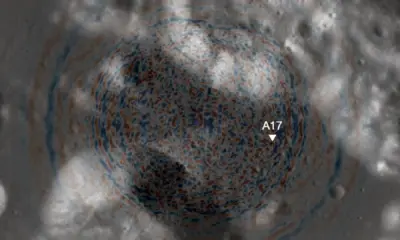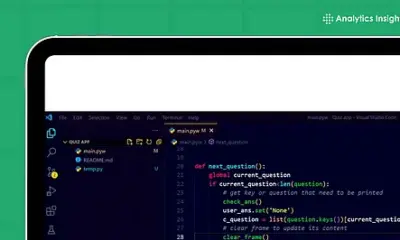Science
SpaceX Successfully Launches Sentinel-6B to Monitor Rising Sea Levels

SpaceX successfully launched the Sentinel-6B ocean monitoring satellite on November 17, 2025. This mission, a collaboration between NASA and the European Space Agency, marks a significant step in a billion-dollar project aimed at measuring long-term changes in sea level, a critical indicator of climate change. The launch took place at 12:21 a.m. EST from the Vandenberg Space Force Base in California.
The Sentinel-6B satellite follows the first satellite in the series, Sentinel-6, which was launched in November 2020. Both satellites are equipped with advanced cloud-penetrating radar technology. This allows them to measure sea levels with an accuracy of about one inch while also tracking wave heights and wind speeds. The data collected will build on a continuous stream of sea level information that has been gathered since the early 1990s.
Significance of the Mission
The data from the Sentinel-6 satellites indicates a persistent rise in sea levels, which scientists largely attribute to global warming primarily caused by human activities. Despite this clear connection, NASA refrained from explicit references to “climate change” in the pre-launch briefing for Sentinel-6B. Instead, Karen St. Germain, director of NASA’s Earth Science Division, emphasized the practical applications of the satellite’s data.
“Sentinel-6B is the latest in a line of missions stretching over three decades, keeping an uninterrupted watch over our planet’s sea surface height,” St. Germain stated. She highlighted the importance of the satellite’s measurements for navigation, search and rescue operations, and industries such as commercial fishing and shipping.
The launch of Sentinel-6B occurred without issues. The Falcon 9 rocket’s first stage successfully propelled the satellite out of the dense lower atmosphere before landing back at the California launch site. The upper stage executed two engine firings before deploying the 2,600-pound satellite into an orbit 830 miles above the Earth, tilted at an angle of 66 degrees to the equator.
Future Implications
Sentinel-6B will not only monitor sea levels but also gather data on temperature and humidity in the lower atmosphere, as well as conditions in the stratosphere. This comprehensive data collection is vital for understanding changes in our climate and its impact on various ecosystems and human activities.
Craig Donlon, a project scientist with the European Space Agency, noted the importance of this mission. “The dynamic balance that persisted before the industrial revolution has been upset by the almost instantaneous combustion of huge reserves of carbon,” he explained. “We see evidence of this dramatic change in many different measurements, but they all point in the same direction: the Earth is warming.”
The collaboration between NASA, the European Space Agency, the European Organization for the Exploitation of Meteorological Satellites (EUMETSAT), and the National Oceanic and Atmospheric Administration underscores the global effort to address climate-related challenges. NASA’s share of the funding for both Sentinel-6 satellites amounted to about $500 million, with European partners contributing a similar amount.
As the world grapples with the implications of rising sea levels, the data provided by Sentinel-6B will play a crucial role in shaping public safety measures, urban planning, and environmental policies for years to come.
-

 Technology5 months ago
Technology5 months agoDiscover the Top 10 Calorie Counting Apps of 2025
-

 Health3 months ago
Health3 months agoBella Hadid Shares Health Update After Treatment for Lyme Disease
-

 Technology7 days ago
Technology7 days agoOpenAI to Implement Age Verification for ChatGPT by December 2025
-

 Health3 months ago
Health3 months agoErin Bates Shares Recovery Update Following Sepsis Complications
-

 Technology4 months ago
Technology4 months agoDiscover How to Reverse Image Search Using ChatGPT Effortlessly
-

 Technology1 month ago
Technology1 month agoDiscover 2025’s Top GPUs for Exceptional 4K Gaming Performance
-

 Technology3 months ago
Technology3 months agoElectric Moto Influencer Surronster Arrested in Tijuana
-

 Technology5 months ago
Technology5 months agoMeta Initiates $60B AI Data Center Expansion, Starting in Ohio
-

 Technology5 months ago
Technology5 months agoRecovering a Suspended TikTok Account: A Step-by-Step Guide
-

 Health3 months ago
Health3 months agoAnalysts Project Stronger Growth for Apple’s iPhone 17 Lineup
-

 Health5 months ago
Health5 months agoTested: Rab Firewall Mountain Jacket Survives Harsh Conditions
-

 Lifestyle5 months ago
Lifestyle5 months agoBelton Family Reunites After Daughter Survives Hill Country Floods




















